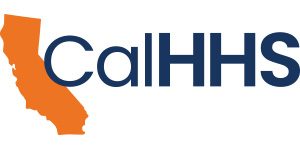The collective work of our departments and offices at the California Health and Human Services Agency (CHHS) is centered on the idea that we deliver programs and services focused on the needs of the people we serve, not on the silo structures of government. The use of data to inform this work is foundational. We are pleased to join our fellow Cabinet Agencies in signing an Inter-Agency Data Exchange Agreement enabling us to share and leverage data across state government in a streamlined and timely manner to deliver on our vision of a person-centered, data-driven organization.
Too often we are focused on delivering specific programs or services within our government silos that we do not, and cannot, see how our programs and systems complement one another to best address the needs of the people we serve. We also recognize our obligation to ensure that the services we provide are coordinated, timely, and trauma-informed. Together, we must act as one government, breaking down silos and building a culture that focuses on delivering services that are person-centered and not program-centered.
California’s statewide Inter-Agency Data Exchange Agreement will enable us to further our work. More importantly, California will be able to better understand and meet the needs of Californians and the state’s most vulnerable populations. This facilitation of data sharing between California’s government agencies, that is both secure and in compliance with privacy rules and laws, will be foundational for many future interagency initiatives to provide more effective services for all Californians.
The Inter-Agency Data Exchange Agreement is modeled on the CHHS Data Exchange Agreement signed by all our departments and offices in May of 2016. Our agreement has enabled us to share data in days and weeks and not months and years, allowing for a more streamlined process for our departments and offices to leverage data to inform decisions. More importantly, by improving data sharing between departments and offices, we gained a deeper understanding of our clients.
As a result, we have built a CHHS Program Dashboard to help us better understand the needs of our clients. In many cases, our clients’ varied needs, such as food insecurity or lack of access to affordable health care, do not happen in isolation of one another. We also know that Californians are entering multiple doors to access various programs and services. For example, two-thirds of CalWORKs clients receive benefits from three health and human services programs; another quarter received services from four programs. With this in mind, we have created data products like the dashboard and the CHHS Data Playbook to help our staff and partners better understand the multifaceted nature of service provision in a dynamic, intuitive format. Focusing on data enables us to prioritize our work on the things that matter the most to the people we serve.
To put this into perspective, during the most recent health plan rate negotiations, Covered California–California’s health insurance exchange– utilized data from the Office of Statewide Health Planning and Development to illustrate that the mix of individuals in the insurance pool were not sicker than the existing patient population. This information was leveraged by Covered California resulting in lower health plan rates for Californians. Similarly, we utilized data from the Departments of Social Services, Health Care Services (DHCS), and Public Health (CDPH) to help us pinpoint individuals who had access and functional needs and were utilizing an electrically powered medical devices so to ensure that they were safe during the wildfires and the public safety power shutoffs.
Data from shared agreements have shaped California’s policies and responses to the COVID-19 pandemic. For example, as part of California’s COVID-19 response, data was utilized from CDPH and DHCS to identify demographic, socioeconomic, and geographic risk factors for COVID-19 outbreaks in California’s among those served by the 1,230 Skilled Nursing Facilities (SNF). The data shared expedited the planning, monitoring, and adjustments in interventions to address the COVID-19 infection rates of California’s SNF population including those on Medi-Cal. Other direct results include the development of GIS driven reporting tools as well as the development of and data driven modifications to CDPH’s guidance measures for limiting transmission of the virus in SNFs and their surrounding communities.
Finally, we are beginning to leverage our resources to ensure that we deliver on this vision. We believe that we must think differently about our programs in order for us to deliver outcomes that improve the lives of the most vulnerable among us. To do this, we must utilize both our people and our information to improve government’s role and function. We have made considerable progress toward this vision by enlisting our teams not only to think about how we do business more efficiently, but by reconnecting with the individuals we serve, our clients.
To further accelerate this vision, we are establishing, with existing resources, a CHHS Center for Data Insights and Innovation. The Center will help us deliver on five key principles: (1) adopt a culture of collaboration and innovation; (2) focus on outcomes and value generation; (3) use data to drive action; (4) put the person back in person-centered; and (5) see the whole person. The CHHS and the Center look forward to working with Government Operations Agency’s Chief Data Officer to scale the Inter-Agency Data Exchange Agreement statewide. Together with counties, cities, and communities, as well as our public, private, faith, and educational partners we will work to make California a healthy, vibrant, inclusive place to live, play, work, and learn.
Mark Ghaly, MD, MPH is the Secretary of the California Health and Human Services Agency
John Ohanian is the Chief Data Officer and Director for the Center of Insights and Innovation at the California Health and Human Services Agency
Contact the Center for Data Insights and Innovation at CDII@CHHS.ca.gov.


